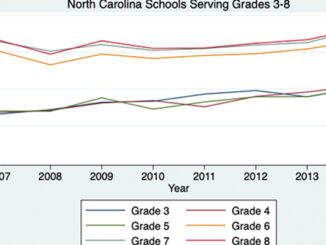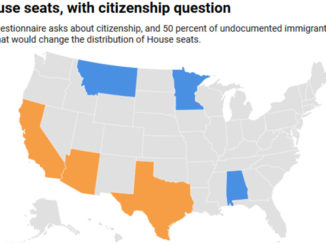
by William McKenzie
Jannet Barrera beat the odds.
The daughter of legal immigrant parents from Mexico who came to the United States without finishing elementary school, Jannet graduated from Texas A&M University in May. This month, the outgoing, committed, 22-year old starts a graduate program in public health at her alma mater. That’s right: graduate school.
Some of you may remember Jannet from two previous pieces that I wrote about her for Points. In 2012, she was among the top 10 students in her class at Sunset High School, where she was student body president. Her parents, especially her father, did not understand her passion for education. But Tony Tovar did. He was Sunset’s principal at the time, and he told me about her. Soon, Jannet and I began talking about her past and future.
She had benefited from mentoring in early high school and started advancing academically and as a leader. By the time she finished Sunset, she had received a full-ride Gates Millennium Scholarship to attend A&M, as well as scholarships from A&M itself. The Gates award is one of the nation’s most prestigious scholarships.
Yet, Jannet did not know if her father would even attend her high school graduation. She only realized he was in the auditorium when she heard him call out her name as she received her diploma. After her mother watched Jannet deliver a speech to the senior class that evening and heard of her accomplishments, she told Jannet she finally understood why her daughter spent so much time at school.
Jannet’s path was not going to be easy. During her first semester in college, she nearly left A&M, where she started as a member of the Corps of Cadets. She quickly left the Corps and even picked up papers to transfer to UT-Arlington.
Her mother wanted her closer to home. Her father would not speak to her about college. And, like many students who are among the first generations of their families to attend college, the high school star felt like she didn’t belong. She kept to herself and her handful of similar friends and studied.
Not until she went home at Christmas did she understand why she needed to stay at A&M. Her nephews and nieces were decked out in Aggie t-shirts. One had even painted her bedroom maroon. Looking into their faces, Jannet knew she had to return to Aggieland.
After she did, she joined a service sorority, became active with first-generation-college students, and kept excelling in her classes. (Academic achievement had always been the easy part.) She soon was on her way, majoring in community health and even traveling to the Dominican Republic, New Zealand and Australia. She celebrated New Years 2015 in Sydney, symbolically and physically far from her roots in Oak Cliff and Sunset High School.
Now, Jannet is entering grad school and has her eyes on earning a doctorate. At the same time, she is working full-time with Head Start in Bryan and starting on a certificate in non-profit management from the Bush School of Government at Texas A&M.
Why assimilating students matters
Jannet’s story matters beyond her personal triumph. The domestic progress of the U.S. depends significantly upon students like Jannet. What we can learn from her journey will instruct the many schools with rising populations of children from immigrant families. Her pathway into the American mainstream also reminds us that those students can help grow America, strengthen our communities and lead our institutions.
Hispanic students are certainly not the only ones from immigrant families or the first generations in their families to attend college. But, in many states, they are a significant bloc of such students.
In Texas alone, more than half of public school students come from Hispanic families. Demographic trends are clear that those numbers will only keep growing. New Census data shows that nearly 75 percent of Texas counties saw their white student populations under age 19 decline from 2010 to 2015. Hispanic student populations of the same age declined in only 30 percent of counties. In other words, most of the state was losing Anglo students but not Hispanic students.
If schools are successful in graduating students like Jannet Barrera, the larger society will reap the social, cultural and economic benefits. If schools can’t move them into the mainstream, the nation will lose their potential and face an economic problem.
Dallas Federal Reserve Bank President Robert Kaplan pinpointed this reality when he recently told this newspaper: “If you’ve got educational attainment levels that are lagging, when you look out 10 and 15 years, all things being equal, it will tend to pull down the economic growth and economic prosperity of the city, and then the state. That’s also true of the country.”
The assimilation of immigrants and their children goes to the heart of our perennial and often nasty debate over immigration. Integration is so crucial because if we know how students like Jannet can make it, we will discover how to tap the creativity, skills and dreams of the hard-working, aspiring people who want to come to our country or who only recently arrived.
Some may think we shouldn’t cultivate those talents, but America’s labor force long has depended upon immigrants and their families. And they will become even more important as the population ages in states like Texas. Steve Murdock, former head of the U.S. Census Bureau who now teaches sociology at Rice University, says two phenomena are happening simultaneously: Texas’ population is becoming more Hispanic and younger while more and more Anglo baby boomers ease into their senior years.
Of course, during powerful periods of nativism we haven’t welcomed and assimilated immigrants . Resistance to immigrants has happened mostly during times of rapid economic and social changes, much like we are experiencing now. But Jannet’s story shows us how we can benefit from the upward trajectory of immigrant families. As she told me during one of our interviews, her story is an American story.
School as the gateway
To their credit, numerous universities are trying to figure out how to bolster students whose families have no prior connection to college. A&M creates an opportunity for first generation students to meet and talk with each other through its Century Scholars and Regents programs.
The value in those programs, Jannet says, is that students from similar backgrounds get to hear each other’s stories. “Many stories don’t get told without opportunities like this,” she explained as she looked back at her last four years. “There is a lot to deal with, while trying to face other school pressures.”
The story that most sticks in my mind from interviewing Jannet over the last four years is about students struggling in a science class her first semester. After one particularly tough exam, the girl next to her said, “Oh, well, I will get my dad to pay for this class again next semester.” Jannet, who had scored a 98 on the test, had no earthly way to relate to that comment. That’s when she started to retreat within herself.
At the University of North Texas at Dallas, professors are trained to look for students who might start to slip away. The 2,600-person student body at the southern Dallas campus is largely comprised of first-generation students.
Bob Mong, the school’s president, says professors look for early signs of trouble and alert trained advisers when a student appears to be falling behind. An adviser then works with the student on a plan to improve. Those specialists are keys to the progress of first-generation students. So are campus-based organizations like Girls Helping Girls, which helps students connect with each other. The goal of these efforts, which you might call the gritty work of assimilation, is to keep students from dropping out. When students do leave early, Mong explains, the school uses data to understand why.
Structure is another key way to guide first-generation students toward graduation. UNT Dallas studied how Guttman Community College in New York narrows course offerings for first-generation students. Instead of providing a wide range of class options that can leave some students with 120 hours and no degree, Guttman’s limited choices help keep students on track. Mong says that strategy prompted UNT Dallas to create a block schedule system, where students sign up for a clear set of courses.
Students can get a running start at a degree from a four-year institution by earning earn college credit while still in high school. For example, UNT Dallas recruits from Trini Garza Early College High School at Mountain View Community College, where students earn college credits.
Of course, long before college, school districts must make sure students are on track to graduate from high school. That starts in elementary school, and schools can’t do that if they don’t know how well their students are performing. Elementary and secondary schools need information from reliable, independent exams to keep on top of student achievement.
Campuses also need to engage parents who may be reluctant to see their children attend college. After one piece I wrote about Jannet, I received a call from Irma Rangel Young Women’s Leadership School in the Dallas school district. The campus regularly works with families that are relatively new to the U.S., connecting families of graduates with families of current students to help parents through the process of letting go as their daughters prepare for college. As one staffer said, “We have Jannet Barreras all over this campus.”
Passion and perseverance
To be sure, there is the perennial issue of the responsibility of students to show up at class, do the work and graduate. This is the role of what University of Pennsylvania psychology professor Angela Duckworth calls passion and perseverance. The author of Grit: The Power of Passion and Perseverance, Duckworth has studied why some people reach their goals and others do not. She writes that those two elements are why some people reach “world-class excellence.”
Two years ago I asked one of Jannet’s A&M advisers whether she thought anything could knock Jannet off course. She replied that, sure, life events can do that to any of us, but she didn’t see it because Jannet was so extremely determined. Teresa Sterling saw Jannet’s determination as early as the ninth grade at Sunset. Sterling, the school’s student council adviser, told me Jannet had a passion for serving others. No matter what challenges were thrown her way, Sterling said, Jannet kept going.
Duckworth writes that passion and perseverance are both important, but they don’t just strike like an unexpected thunderbolt. They take time to develop. She calls it “fostering a passion” and taking time to develop that passion and deepen it over a lifetime.
Charter schools like KIPP nationally and the International Leadership of Texas locally work on developing traits like grit. We still need more academic research into the relationship between academic performance and passion and presentation. But the latter two certainly paid off for Jannet Barrera.
Jannet Barrera’s story may read like that of a superheroine, but that’s not the point. What we need are systems that can identify students like Jannet, cultivate their talents, and keep them moving toward college degrees, including two-year community college certificates.
That way, we can grow more students from first-generation families. The assimilation of such students might ease the anxiety of those who worry about a changing America. As Jannet’s journey shows, her story is at heart the American story.
William McKenzie is editor of The Catalyst: A Journal of Ideas from the Bush Institute. Email: [email protected]



